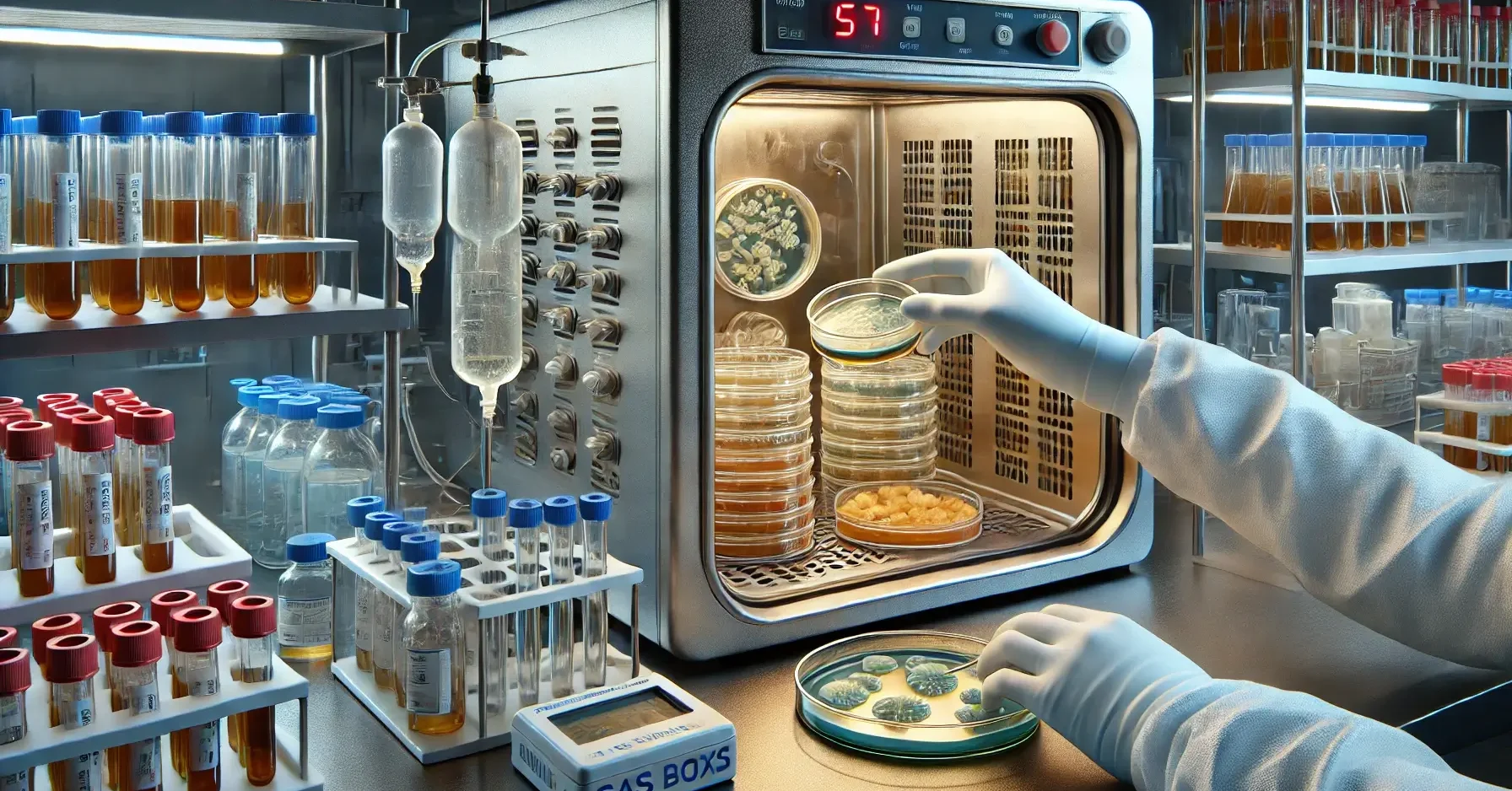- Cultivation of Anaerobes requires special techniques to create and maintain oxygen-free environments.
- Anaerobes are microorganisms that grow in the absence of oxygen.
- Two common methods for cultivating anaerobes are the candle jar method and the GasPak jar method.

Candle Jar Method
- Description: A simple and inexpensive method to create a microaerophilic (low oxygen) environment.
-
Procedure:
-
- Place culture plates inside a large, airtight jar.
- Add a lit candle to the jar and seal the lid.
- The candle burns, consuming most of the oxygen and increasing the levels of carbon dioxide until the flame extinguishes due to oxygen depletion.
- Applications: Suitable for growing microaerophilic bacteria and some facultative anaerobes that require reduced oxygen levels but not complete anaerobiosis.
- Advantages: Easy to set up and inexpensive.
- Disadvantages: Does not achieve complete anaerobic conditions; only reduces oxygen levels.
GasPak Jar Method
- Description: A widely used method for creating an anaerobic environment using chemical reactions.
-
Procedure:
- Place culture plates or tubes inside the GasPak jar.
- Add a GasPak sachet to the jar, which contains chemicals that, when activated, generate hydrogen and carbon dioxide gases.
- Seal the jar tightly. The hydrogen gas reacts with oxygen in the presence of a palladium catalyst to form water, thus removing oxygen and creating an anaerobic atmosphere.
- An indicator strip is often used to confirm the absence of oxygen.
- Applications: Suitable for the cultivation of obligate anaerobes, facultative anaerobes, and microaerophiles.
- Advantages: Reliable and produces a true anaerobic environment.
- Disadvantages: Requires the purchase of GasPak sachets and a specialized jar.
Click Here to Watch the Best Pharma Videos

